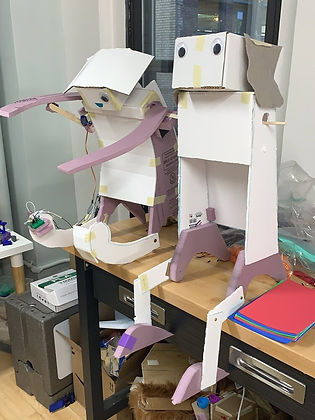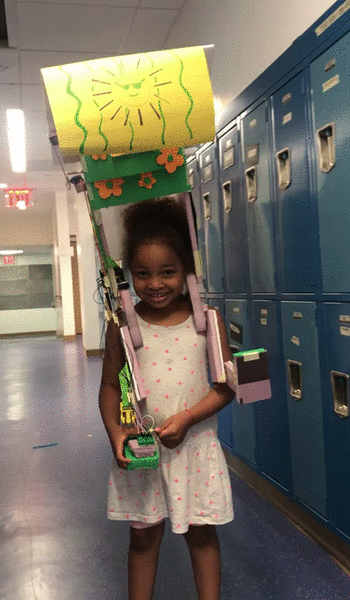2050 Future World
2019
.jpg)
OVERVIEW
2050 Future World is a hands-on robot building project that empowers children to imagine what the inventions of the future will look like.
Children combine their imagination with their engineering and circuitry skills to create a robot pal.
MY ROLE
Lead Designer
THE TEAM
1 Designer, 1 Hardware Engineer
TIMELINE
May 2019

The Brief
How old will you be in 2050? And what will the world look? Will we finally have those flying cars and hover skateboards? Or will it look more like today, just maybe with a few extra robots?
In this future world, two big things have changed—humans have grown lonely due to their obsession with technology, and the sun has gotten so strong that it’s dangerous to go outside during the day!
This robot pal project prompts children to imagine what the world will be like 30 years from now.


Sketches & prototyping
To kick off the brainstorming process, an overlay sketch was created in order to help generate as many ideas as possible.
The point of this exercise was to re-imagine the typical NORY classroom environment in the context of a future world. What tech gear would kids want to wear in the future? Would inventions be equivalent to superpowers?
Using the results of the photo overlay sketch, I started to sketch out some more fully-formed ideas.




Narrowing the project scope
Robotic wearables were a curriculum team favorite. They are interactive and can be easily personalized by each student to make it feel like their own.
Using the results of the brainstorming sketches, I shifted focus over to creating quick form prototypes. This helped immensely in addressing the parameters of the 2050 Future World project.


Circuitry & hardware exploration
The main student/robot interaction occurs at the foot of the robot. When the student spins a potentiometer knob, it causes the robot’s arms to swing up and down.
The breakdown of the hardware consists of the following
• Arduino UNO Board
• Servo Motor
• Potentiometer


User testing
A round of user testing was conducted with some of our NORY campers before heading into the creation of the final prototype.
This was extremely helpful because it clarified a lot of the questions that we had about the robots potential, such as: adjustability for various body sizes, ease of use with the technology, and whether or not students would feel motivated to interact with the robot.
The goal was to turn the project from a step-by-step instruction based process to a more open-ended process that would allow students to better express themselves.

.png)

The final project
We headed back to NORY HQ to put some final touches on the project before it made its debut in the classroom. The final 2050 Future World project was developed as a hands-on project to be instructed in a week long summer camp setting. Kids ages 3-12 were all confident creators of this project!






